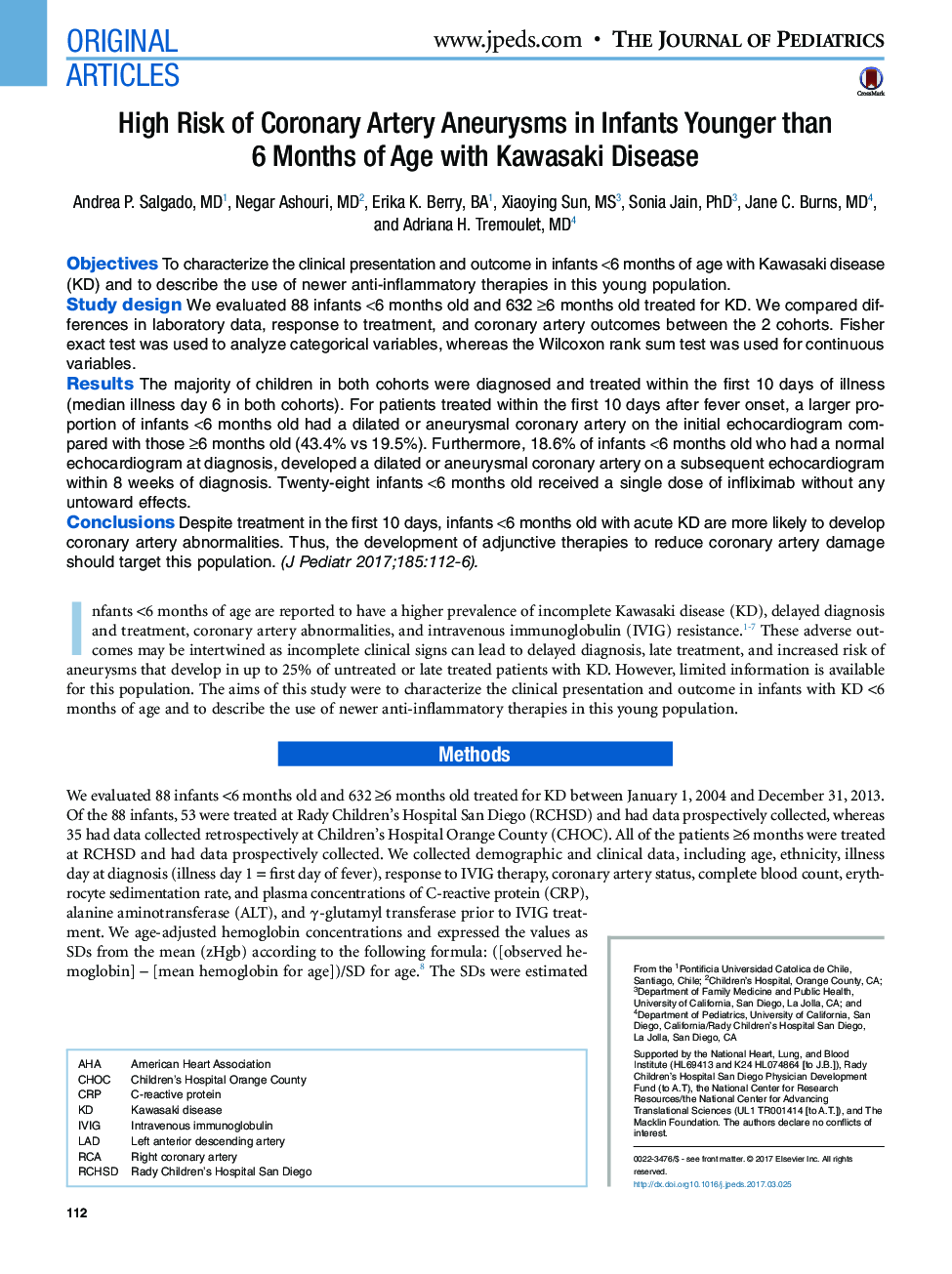| Article ID | Journal | Published Year | Pages | File Type |
|---|---|---|---|---|
| 5719125 | The Journal of Pediatrics | 2017 | 6 Pages |
ObjectivesTo characterize the clinical presentation and outcome in infants <6 months of age with Kawasaki disease (KD) and to describe the use of newer anti-inflammatory therapies in this young population.Study designWe evaluated 88 infantsâ<6 months old and 632ââ¥6 months old treated for KD. We compared differences in laboratory data, response to treatment, and coronary artery outcomes between the 2 cohorts. Fisher exact test was used to analyze categorical variables, whereas the Wilcoxon rank sum test was used for continuous variables.ResultsThe majority of children in both cohorts were diagnosed and treated within the first 10 days of illness (median illness day 6 in both cohorts). For patients treated within the first 10 days after fever onset, a larger proportion of infants <6 months old had a dilated or aneurysmal coronary artery on the initial echocardiogram compared with those â¥6 months old (43.4% vs 19.5%). Furthermore, 18.6% of infantsâ<6 months old who had a normal echocardiogram at diagnosis, developed a dilated or aneurysmal coronary artery on a subsequent echocardiogram within 8 weeks of diagnosis. Twenty-eight infantsâ<6 months old received a single dose of infliximab without any untoward effects.ConclusionsDespite treatment in the first 10 days, infantsâ<6 months old with acute KD are more likely to develop coronary artery abnormalities. Thus, the development of adjunctive therapies to reduce coronary artery damage should target this population.
